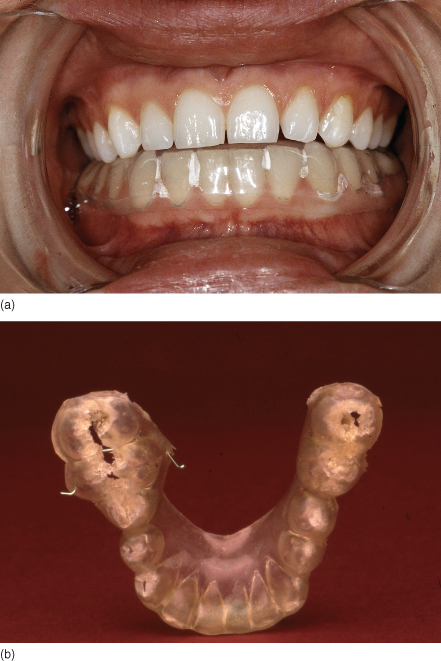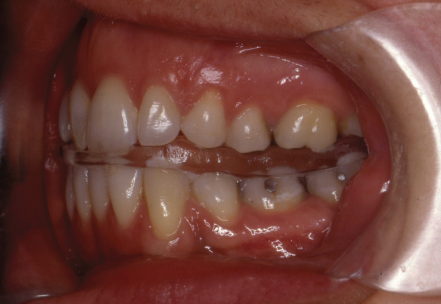Chapter 14
What’s of Use to Me in Practice?
When considering management of any patient with a TMD, it is pointless trying to evolve a treatment plan that is either impractical, on the one hand, or unnecessary, on the other.
You are the patient’s general dental practitioner and in most instances you will have known the patient for some period of time. You will therefore be aware of treatment needs and expectations more accurately than the specialist whom the patient is seeing for the first time. It is pointless prescribing an anterior repositioning splint for a young patient that, to be successful, must be worn 24 hours a day if you know that the patient won’t comply with the usage instructions. Similarly, if you do refer your patient on for a specialist opinion, if appropriate, ask for a practice-based treatment plan if you wish to undertake the management yourself and it is within the remit of your experience. Alternatively refer for an opinion and treatment. Always monitor what is being done for your patient elsewhere and be aware of the treatment objectives and proposed outcome.
Counselling and Reassurance

Never underestimate the importance of this. Your patient should have his or her symptoms explained in simple terms that he or she can understand. The treatment objectives should equally be explained and the fact that you may change the treatment plan part way through your management, in response to how the patient’s symptoms alter as time passes. Discussing parafunctional activity is also important for raising a patient’s awareness.
Drug Therapy

The two groups of drugs normally employed in the management of patients with TMDs are benzodiazepines and NSAIDs. Benzodiazepines have a useful muscle relaxant effect and it is preferable to prescribe them in liquid form, such as Temazepam Oral Suspension, so that patients can titrate their own dose and feel the benefits of the muscle relaxation without any ‘hangover’ (see Chapter 6). A prescription should be given with the knowledge of the patient’s GP and the patient should be counselled that benzodiazepines are licensed as anxiolytics, not as muscle relaxants, although they do have a recognised pharmacological muscle relaxant effect. They are not licensed for prescription to patients aged under 12 years.
Most patients will have already self-prescribed NSAIDs such as ibuprofen or will have been advised to take these. They should be taken regularly three times a day after food. It will be some days before the maximum anti-inflammatory effect is realised. NSAIDs must not be prescribed to any patient with a history of gastric problems or asthma.

Tricyclic antidepressant drugs cannot be prescribed by general dental practitioners and should be used with caution in the management of TMDs.
Physiotherapy

As with any musculoskeletal injury physiotherapy has a large part to play in the patient’s successful management. If a patient presents with an acute TMD, immediate referral for physiotherapy should be considered. Leave the choice of the physiotherapy treatment up to the therapist, but suggest that during the acute phase of the disorder excessive exercise should be avoided if there is a question of disc displacement.
The patient should be advised to treat the TMD as if they had sprained any other joint and rest should be suggested rather than aggressive attempts to increase the range of movement. To do so could compromise the integrity of the intra-articular disc, depending on the particular diagnosis. The ideal frequency of appointments is two to three times a week for 3–4 weeks, totalling 8–10 sessions in all, but leave this to the discretion of the physiotherapist. Once a week will have much less benefit.
Splint Therapy
It is outwith the remit of this text to give a definitive overview on splint therapy. Such information is readily available elsewhere.

The soft lower vacuum formed splint is commonly used but cannot be made to any prescription. Usually an impression of the opposing arch is not even made. It is suggested that these appliances either have a placebo effect or in some way ‘absorb’ the forces generated by the muscles. What does tend to happen in practice is that these appliances increase parafunction in a number of patients, thereby making the clinical symptoms worse. It is not unusual for a patient to return for review, having bitten completely through the surface of such an appliance (Figure 14.1).
Figure 14.1 Soft bite guard after being worn by someone with bruxism for 3 months.
(From Gray RJ, Davies SJ. Emergency treatment of acute temporomandibular disorders: Part I. Dent Update 1997;24:170–3, with permission.)


The anterior repositioning splint is a useful appliance for patients who have a click from the TMJ that disappears on protrusion of the mandible. This appliance needs to be worn 24 hours a day, to be removed only for cleaning after eating and should be used for approximately 12 weeks. A gradual weaning-off process should be used (Figure 14.2).
Figure 14.2 Anterior repositioning splint in place with incisors in edge-to-edge relationship.
(Note the full coverage of all occlusal surfaces.)

The patient should stop wearing the appliance if the jaw locks or if any part breaks off because this latter situation could allow tooth movement.

The localised occlusal interference splint can be used for patients who grind or clench their teeth but only for those who do so in centric occlusion. If a patient performs parafunction at extreme lateral movements, this appliance will immediately be rendered inactive because it will not contact during the parafunctional activity (Figure 14.3).
Stay updated, free dental videos. Join our Telegram channel

VIDEdental - Online dental courses


